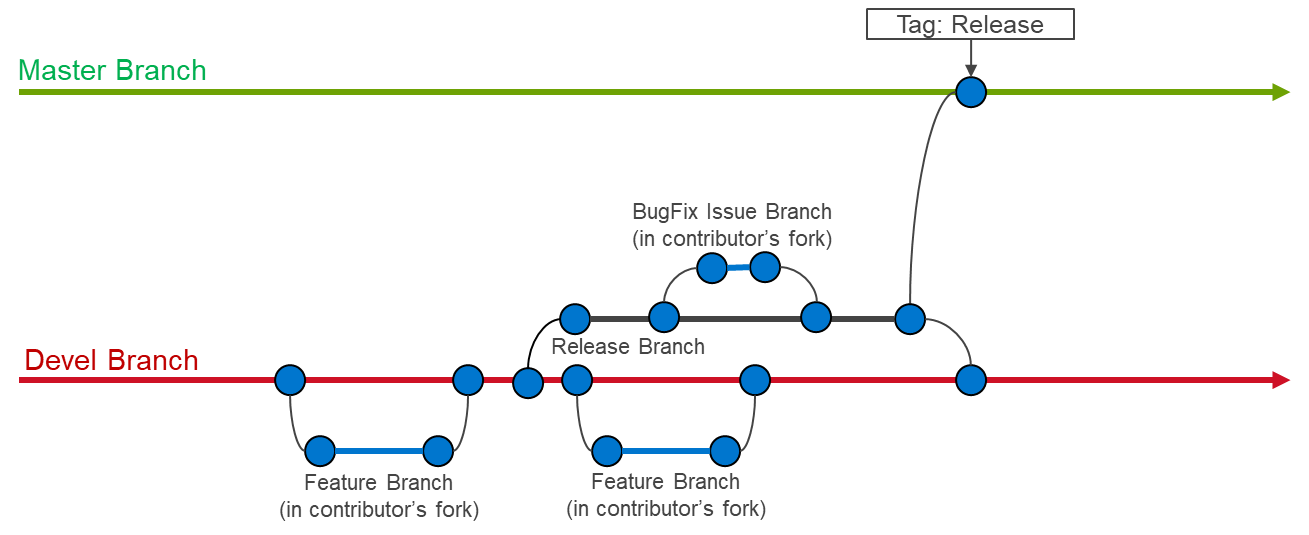CONTRIBUTING.md 5.5 KB
CONTRIBUTE
Introduction
We encourage everyone to help us improve Omnia by contributing to the project. Contributions can be as small as documentation updates or adding example use cases, to adding commenting or properly styling code segments, to full feature contributions. We ask that contributors follow our established guidelines for contributing to the project.
These guidelines are based on the pravega project.
This document will evolve as the project matures. Please be sure to regularly refer back in order to stay in-line with contribution guidelines.
How to Contribute to Omnia
Contributions to Omnia are made through Pull Requests (PRs). To make a pull request against Omnia, use the following steps:
- Create an issue: Create an issue and describe what you are trying to solve. It does not matter whether it is a new feature, a bug fix, or an improvement. All pull requests need to be associated to an issue. When creating an issue, be sure to use the appropriate issue template (bug fix or feature request) and complete all of the required fields. If your issue does not fit in either a bug fix or feature request, then create a blank issue and be sure to including the following information:
- Problem description: Describe what you believe needs to be addressed
- Problem location: In which file and at what line does this issue occur?
- Suggested resolution: How do you intend to resolve the problem?
- Create a personal fork: All work on Omnia should be done in a fork of the repository. Only the maintiners are allowed to commit directly to the project repository.
- Issue branch: Create a new branch on your fork of the repository. All contributions should be branched from
devel. Usegit checkout devel; git checkout -b <new-branch-name>to create the new branch.- Branch name: The branch name should be based on the issue you are addressing. Use the following pattern to create your new branch name: issue-number, e.g., issue-1023.
- Commit changes to the issue branch: It is important to commit your changes to the issue branch. Commit messages should be descriptive of the changes being made.
- Push the changes to your personal repo: To be able to create a pull request, push the changes to origin:
git push origin <new-branch-name>. Here I assume thatoriginis your personal repo, e.g.,lwilson/omnia.git. - Create a pull request: Create a pull request with a title following this format Issue ###: Description (i.e., Issue 1023: Reformat testutils). It is important that you do a good job with the description to make the job of the code reviewer easier. A good description not only reduces review time, but also reduces the probability of a misunderstanding with the pull request.
- Important: When preparing a pull request it is important to stay up-to-date with the project repository. We recommend that you rebase against the upstream repo frequently. To do this, use the following commands:
git pull --rebase upstream master #upstream is dellhpc/omnia git push --force origin <pr-branch-name> #origin is your fork of the repository (e.g., <github_user_name>/omnia.git) - PR Description: Be sure to fully describe the pull request. Ideally, your PR description will contain:
- A description of the main point (e.g., why was this PR made?),
- Linking text to the related issue (_e.g., This PR closes issue #_),
- How the changes solves the problem, and
- How to verify that the changes work correctly.
- Important: When preparing a pull request it is important to stay up-to-date with the project repository. We recommend that you rebase against the upstream repo frequently. To do this, use the following commands:
Omnia Branches and Contribution Flow
The diagram below describes the contribution flow. Omnia has two lifetime branches: devel and master. The master branch is reserved for releases and their associated tags. The devel branch is where all development work occurs. The devel branch is also the default branch for the project.
Signing Your Commits
We require that developers sign off their commits to certify that they have permission to contribute the code in a pull request. This way of certifying is commonly known as the Developer Certificate of Origin (DCO). We encourage all contributors to read the DCO text before signing a commit and making contributions.
To make sure that pull requests have all commits signed off, we use the Probot DCO plugin.
Signing off a commit
To sign your commit, use either --signoff or -s with the commit command:
git commit --signoff
git commit -s
Make sure you have your user name and e-mail set. The --signoff | -s option will use the configured user name and e-mail, so it is important to configure it before the first time you commit. Check the following references:
